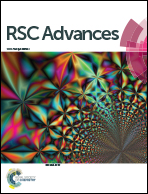Antioxidant activity of SSeCAHK in HepG2 cells: a selenopeptide identified from selenium-enriched soybean protein hydrolysates
Abstract
This paper is aimed at purifying and identifying selenium (Se)-containing antioxidative peptides from Se-enriched soybean peptides (SSP). In this work, the SSP was separated into five fractions (F1 to F5). Fraction F4, displaying the highest antioxidative activity, was further separated, and sub-fractions F4-1 to F4-5 were selected for antioxidative activity evaluation using 1,1-diphenyl-2-picrylhydrazyl (DPPH), 2,2-azino-bis-(3-ethylbenzo-thiazoline-6-sulphonic acid)diammonium salt (ABTS), and OH− radical scavenging assays. The Se-containing antioxidative peptides with sequence Ser–SeC–Ala–His–Lys (SSeCAHK) were identified in sub-fraction F4-1 and chemically synthesized. This Se-containing pentapeptide showed a preventive effect against hydrogen peroxide (H2O2)-induced oxidative stress in HepG2 cells. Pretreating the cells for 2 h with SSeCAHK (0.13–0.50 mg mL−1) induced strong intracellular, reactive oxygen species (ROS) scavenging activity while preventing a decrease in reduced glutathione (GSH) and an increase in malondialdehyde (MDA). Therefore, SSeCAHK treatment improved H2O2-induced oxidative stress in HepG2 cells, demonstrating the significant potential of SSeCAHK as a natural antioxidative functional material for dietary supplementation.



 Please wait while we load your content...
Please wait while we load your content...